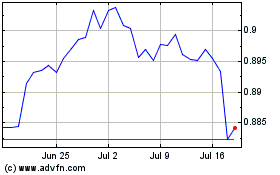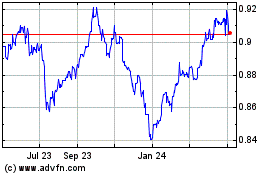U.S. Dollar Falls On Rising Trade Worries
June 25 2018 - 3:00AM
RTTF2
The U.S. dollar declined against its major counterparts in the
European session on Monday, as trade war fears showed no sign of
abating.
U.S. President Donald Trump on Sunday issued new threats against
America's trade partners, calling on all the countries to remove
trade barriers and tariffs, and raising concerns about potential
escalation of the trade battle between the U.S. and the rest of the
world.
In another development, the Wall Street Journal reported that
Trump plans to bar many Chinese companies from investing in U.S.
technology firms and block additional technology exports to
China.
The U.S. treasury is looking to block companies with at least 25
percent Chinese ownership from buying companies involved in
"industrially significant technology".
Trump is also planning to prevent U.S. companies from selling
"industrially significant technology" to China
The currency traded mixed against its major rivals in the Asian
session. While it fell against the yen and the franc, it rose
against the euro and the pound.
The greenback retreated to 1.1671 against the euro, from a high
of 1.1629 hit at 3:00 am ET. Next key support for the greenback is
likely seen around the 1.18 level.
Survey data from Ifo Institute showed that Germany's business
sentiment weakened in June.
The business confidence index fell to 101.8 in June, in line
with expectations. The initially estimated score for May was
102.2.
The greenback declined to 0.9869 against the Swiss franc, after
rising to 0.9890 at 3:00 am ET. If the greenback falls further,
0.96 is likely seen as its next support level.
The greenback eased back to 1.3267 against the pound, reversing
from an early 4-day high of 1.3221. The greenback is likely to find
support around the 1.35 level.
The greenback held steady against the yen, after having fallen
to a 2-week low of 109.38 at 1:30 am ET. The next likely support
for the greenback is seen around the 108.00 level.
Data from the Cabinet Office showed that Japan's leading index
improved more than initially estimated in April.
The leading index, which measures the future economic activity,
rose to 106.2 in April from 104.5 in March. The flash score for
April was 105.6.
Looking ahead, U.S. new home sales for May are scheduled for
release in the New York session.
US Dollar vs CHF (FX:USDCHF)
Forex Chart
From Apr 2024 to May 2024

US Dollar vs CHF (FX:USDCHF)
Forex Chart
From May 2023 to May 2024
